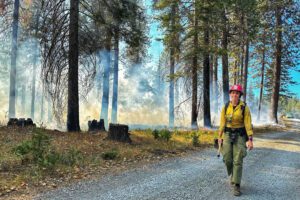Extreme heat events burden California with almost $8 billion in losses

Extreme heat events burden California with almost $8 billion in losses | Insurance Business America
Catastrophe & Flood
Extreme heat events burden California with almost $8 billion in losses
Heat events have caused over 5,000 hospitalizations and nearly 460 deaths
Catastrophe & Flood
By
Kenneth Araullo
California experienced seven extreme heat events in the past decade, resulting in approximately $7.7 billion in insured and uninsured losses, according to a report from the state’s insurance regulator.
The California Department of Insurance reported that about 12 times more people were affected by these heat events compared to the state’s seven most recent wildfires, which impacted around 3 million Californians.
The report highlighted significant health and safety impacts, including nearly 460 deaths and around 344 adverse birth outcomes, such as low birth weight and preterm births. The heat events also caused over 5,000 hospitalizations, 10,600 emergency room visits, and 138,000 outpatient visits.
Fewer than 30% of those with heat-related hospitalizations and emergency room visits had private insurance, with Medicare and Medi-Cal covering 60% to 79% of these patients.
While certain costs related to extreme heat can be covered by health insurance, workers’ compensation, and crop insurance, the insurance department identified significant gaps in traditional coverage for heat-related losses.
“Most of these costs aren’t covered by insurance, so small businesses and working families are at the greatest risk. California must focus on solutions to reduce the intensity of heat in our communities, such as expanding urban tree canopies and access to green spaces,” said Katelyn Roeder, California state director for the Environmental Defense Fund.
The report also included several recommendations from the California Department of Insurance. These included the development of heat-related business interruption products and policies covering infrastructure and agriculture damages.
The report also recommended offering premium incentives through federal agriculture insurance programs for policyholders who implement heat-resiliency measures. Private crop insurers, covering a small number of specialty crops in the state, should also incentivize risk mitigation efforts.
What are your thoughts on this story? Please feel free to share your comments below.
Related Stories
Keep up with the latest news and events
Join our mailing list, it’s free!






